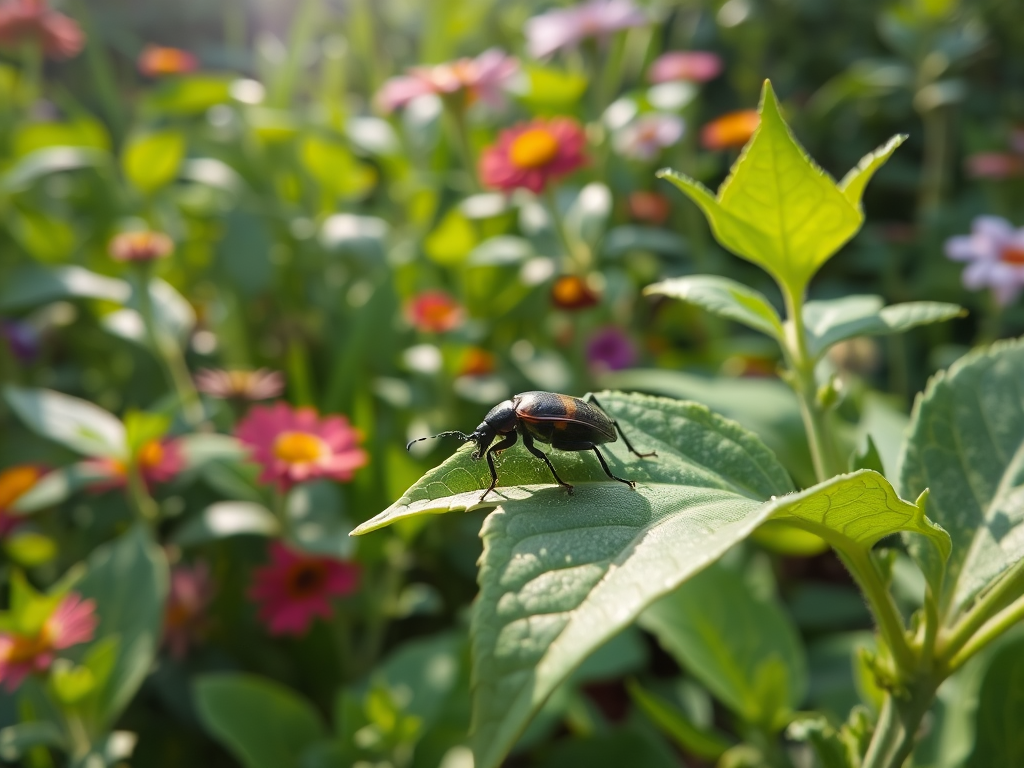Weevils are often overlooked when it comes to interesting and curious insects. With their characteristic elongated snouts and diverse appearances, they spark intrigue among many who encounter them. But a prevalent question lingers in the minds of many: can weevils fly? Understanding weevils entails much more than simple observation; it requires delving into their biology, behavior, and habits. The myths surrounding their flying capabilities contribute to widespread misconceptions about these fascinating beetles. This article aims to unravel the truth, explore the various types of weevils, and clarify their potential for flight.
What Are Weevils?

Weevils belong to the family of beetles known scientifically as Curculionidae, renowned for their distinctive snouts. These insects are an incredibly diverse group, with thousands of species documented worldwide. Not only do they have unique physical traits, but they also occupy a wide range of ecological niches—from gardens and farms to household pantries. Each species possesses characteristics that help them adapt to their environments. Understanding weevils is fundamental in appreciating their role in nature and their impact on human endeavors, particularly in agriculture.
Types of Weevils
- Grain Weevil: Infests stored grains and significantly affects food supplies.
- Rice Weevil: Known for its damaging effects on rice; it’s a common pest in many households.
- Cotton Weevil: A notorious pest that targets cotton crops, leading to economic losses.
- Acorn Weevil: Typically found in forests, known for its interesting life cycle involving oak trees.
Habitat and Behavior
Weevils can be found in a variety of habitats such as woodlands, fields, and even urban areas. Their preferred living environments often correlate with the types of food they consume, which can include seeds, leaves, and stored grains. These pests exhibit behaviors that make them adept at survival, including their ability to hide from predators. Additionally, certain weevils have developed beneficial relationships with plants, helping to pollinate while also feeding. Understanding their behavior is crucial in both ecological terms and for managing their impact on crops.
Do Weevils Have Wings?

The anatomy of weevils raises an interesting question about their ability to fly. While many insects have evolved wings that allow for significant airborne mobility, weevils exhibit unique adaptations that affect their flight capabilities. Most weevils possess what is known as ‘elytra,’ which are hardened forewings that cover their back and serve as protection. However, the structure of these wings varies among species and has implications for whether they can actually take to the air. Not all weevils have functional wings for flight, and many are primarily ground-dwelling creatures.
To comprehend the potential for flight in weevils, it’s essential to understand the anatomical structure of their wings. Unlike many flying insects, weevil wings can be quite short or even non-functional. This leads to differences in the way they move and travel. The variations can also provide insights into evolutionary adaptations to their environments. For instance, while some weevils may retain the capability for flight, others have adapted to a more terrestrial lifestyle, relying on crawling for movement instead. This diversity is a remarkable example of nature’s ability to adapt for survival.
Common Myths About Weevils
As with many aspects of nature, myths about weevils and their flying capabilities abound. These misconceptions often stem from a lack of understanding about their biology and behavior. It’s essential to address these myths to set the record straight. Here, we’ll debunk some prevalent beliefs regarding weevils.
Myth 1: All Weevils Can Fly
Many people assume that the presence of wings equates to the ability to fly. In reality, this is far from the truth. A significant proportion of weevil species are incapable of flight due to their wing structure. While some weevils may use their wings to glide short distances in specific situations, most prefer to remain grounded where they can safely navigate their environment in search of food.
Myth 2: Weevils Use Flight as Their Primary Mode of Travel
Another common misconception is that weevils primarily rely on flight for movement. In fact, this is not accurate. While the ability to fly exists among some weevil species, most weevils utilize walking as their primary means of travel. They tend to crawl around in search of resources, using flight sparingly, primarily during certain environmental conditions or when escaping predators. Understanding these behavior patterns provides perspective on how these insects interact with their environment.
Why Some Weevils Do Fly
Despite common myths, some weevil species do possess the ability to take to the air under certain circumstances. Various factors trigger this rare activity, including changes in environment, food scarcity, and reproductive behaviors. The selective nature of flight in weevils points towards its role in broader ecological functions. Understanding these triggers helps to illuminate the weevil’s existence and its adaptations to survival.
- Food Scarcity: When food supplies diminish, flying may help weevils locate new resources.
- Mating: Males may fly to attract females or to reach reproductive areas.
- Predator Evacuation: Weevils might take flight to escape predation, ensuring their survival and continuing their lifecycle.
| Weevil Species | Ability to Fly | Main Habitat |
|---|---|---|
| Grain Weevil | Yes | Stored grains |
| Rice Weevil | Yes | Rice storage |
| Cotton Weevil | No | Cotton fields |
| Acorn Weevil | No | Forests |
Conclusion
In summary, we’ve journeyed through the intriguing world of weevils, addressing the vital question of whether these beetles can fly. While some weevil species possess wings and the ability to take to the air, the majority do not utilize flight as a primary mode of travel. The common myths surrounding their abilities often stem from a misunderstanding of their unique biological adaptations. By clarifying these myths, we gain a more nuanced understanding of weevils—an entirely fascinating and ecologically significant group of insects. Whether infesting crops or residing in gardens, weevils continue to play critical roles in agricultural ecosystems.
Frequently Asked Questions
- Can all weevils fly?
No, not all weevils have the ability to fly. Many species are ground-dwelling insects and do not possess the necessary anatomical structures for flight. - What is the purpose of a weevil’s wings if they can’t fly?
The wings may assist in other functions such as balance during movement or protection during their lifecycle stages. - How far can flying weevils travel?
Flying weevils can travel short distances, often in search of food or mates, but their flight is typically not extensive. - Are flying weevils a concern for households?
While they can infest food products, their flying ability generally does not make them a greater threat compared to non-flying species. - Can weevils be prevented from entering homes?
Yes, proper food storage, regular cleaning, and sealing entry points can help prevent weevils from becoming a household nuisance.
